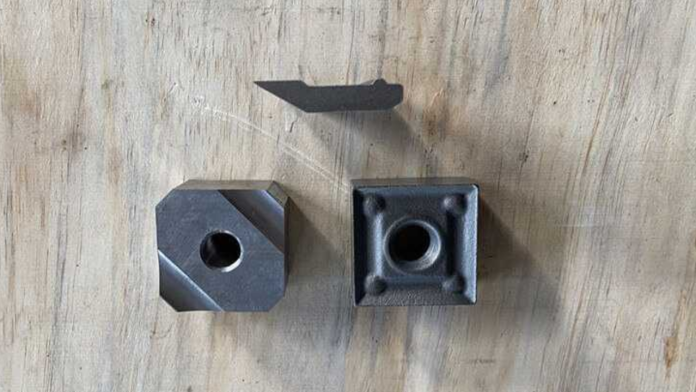A wood chipper, sometimes called a tree chipper, is a device that chops wood into small pieces. Typically, the wood is from tree trunks, branches, and limbs. They facilitate easy cleanup following plant upkeep because getting rid of the chipped wood is simpler. Wood chippers are often wheeled and portable. To simplify, tow them to the chipping location behind the chip track. Depending on the size of the internal combustion engine, chippers come in different lengths.
Typically, the engine produces between 3 and 1,000 horsepower (2.2 and 750 kW). As a result, the amount of vegetation a horse can handle increases with size. Wood and brushes are fed into a hopper of wood chipper blades to chip it. The hopper incorporates a collar as a partial safety feature for the operator. Chips of wood are produced by the cutting mechanism (blades on a revolving impeller) at the bottom of the hopper.
Materials Are Commonly Used To Make Wood Chipper Blades
The efficacy, longevity, and general performance of wood chipper blades are greatly influenced by the materials used in their construction. Every material has unique qualities and benefits that meet various purposes for wood chips.
Implementing Workload
It’s essential to consider the application and workload when choosing the optimum material for wood chipper blades. Because of their strength and resistance to wear, materials like carbide or hardened steel are suggested for heavy-duty applications like industrial or commercial wood chipping.
These materials are resilient to the demanding workload of processing a lot of wood. On the other hand, premium steel or tool steel might be adequate for less frequent or light use, striking a compromise between performance and affordability. Blade lifetime and best performance are ensured by matching the material to the particular application.
Wooden Sort
The ideal material for wood chipper blades depends heavily on the type of wood being treated. Materials having extraordinary hardness, such as carbide, are chosen for hardwoods because they are denser and more abrasive. Hardwoods present cutting challenges that carbide blades can easily meet, guaranteeing minor wear and a long lifespan.
On the other hand, premium steel or tool steel might work well with softer woods and offer an affordable option without sacrificing functionality. Optimizing the material of the blade by the unique properties of the wood being chipped increases productivity, extends the blade’s life, and improves overall wood chipper performance.
Spending Plan
Budgetary considerations are very important while selecting wood chipper blades. Carbide blades are initially more expensive but last longer and are incredibly durable. Premium steel and tool steel blades offer an economical substitute that balances price and functionality.
Based on the necessary workload and wood types, you can make an informed decision by evaluating your financial limits. Achieving a balance between the initial investment and long-term cost-effectiveness is crucial to make sure that the wood chipper blades selected fulfill both performance and budgetary requirements.
Maintenance
Maintenance is a major factor when choosing wood chipper blades. Sustaining performance and cost-effectiveness require minimal maintenance and sharpening. Quick-sharpening blades increase operational effectiveness by reducing downtime. Maintaining the blades properly through regular cleaning and lubrication is essential to extending their lifespan.
Overall blade longevity is increased by tools like tools or premium steel that simplify maintenance and sharpening. By selecting blades with maintenance in mind, you can minimize the chance of unforeseen problems and maximize the effectiveness of wood chipping operations while ensuring that the wood chipper stays in top operating condition.
Manufacturer Recommendations
When choosing wood chipper blades, following the manufacturer’s recommendations is essential. The recommended blade materials are outlined in the instructions supplied by the chipper manufacturer to ensure compatibility and peak performance. Manufacturers customize recommendations to improve safety and efficiency by considering the nuances of their machines’ design and operation.
Disregarding these recommendations could reduce the chipper’s efficiency and cause problems with operation. Adhering to the manufacturer’s recommendations for blade materials ensures that the chosen blades are appropriate for the particular wood chipper model, enhancing longevity, dependability, and general efficacy in wood chipping applications.
Conclusion
Several factors, such as the type of wood, application, budget, and maintenance requirements, determine the ideal material for wood chipper blades. Each substance has its own set of qualities and benefits for varying wood chipping demands. It will help you choose the best blades for your particular needs if you know these materials and their properties.










